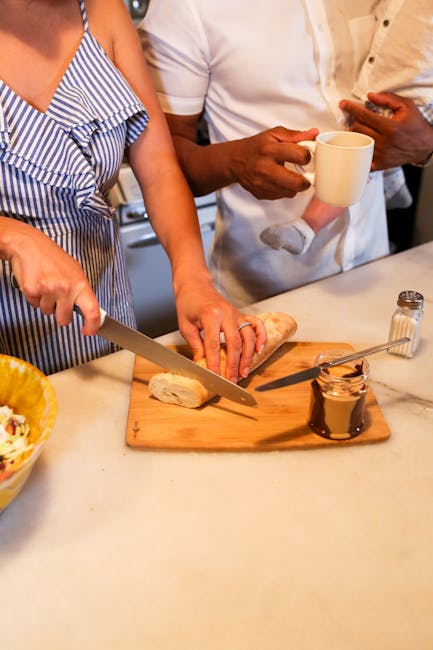Unlock Your Success: 10 Surefire Tips to Elevate Your Cooking Classes and Tutorials Using Essential Baking Tools
Welcome to our guide on how to take your cooking classes and tutorials to the next level using essential baking tools. Whether you’re a seasoned chef looking to enhance your teaching or a passionate home cook hoping to share your knowledge, these tips will help you elevate your skillset and create a more engaging learning experience. By incorporating the right tools and techniques, you can unlock your potential and inspire others to embrace the art of baking.
1. Invest in Quality Baking Utensils
The foundation of any successful baking tutorial is having the right tools at your disposal. Invest in quality baking utensils such as mixing bowls, measuring cups and spoons, a whisk, spatula, and rolling pin. These tools are essential for preparing and executing recipes with precision and ease.
2. Utilize a Kitchen Scale
Accuracy is key in baking, and using a kitchen scale can make a significant difference in the outcome of your recipes. Measuring ingredients by weight rather than volume ensures consistency and precision, resulting in perfectly baked goods every time. Encourage your students to invest in a kitchen scale for more reliable results.
3. Demonstrate Proper Mixing Techniques
Show your students the importance of proper mixing techniques, such as folding, creaming, and beating. Demonstrate the proper way to incorporate ingredients to achieve the desired texture and consistency in their baked goods. By mastering these techniques, your students will elevate their baking skills and produce professional-quality results.

4. Highlight the Importance of Temperature Control
Temperature control is crucial in baking, as it can affect the texture, rise, and overall outcome of the final product. Emphasize the importance of preheating the oven, bringing ingredients to room temperature, and using a thermometer to check the doneness of baked goods. By paying attention to temperature details, your students can elevate their baking game and achieve consistent results.
5. Introduce Essential Baking Ingredients
Teach your students about essential baking ingredients and their roles in recipes. From flour and sugar to leavening agents and fats, each ingredient plays a critical role in achieving the perfect bake. Help your students understand the function of each ingredient and how they contribute to the overall structure and flavor of their baked creations.
6. Showcase Proper Baking Equipment
Introduce your students to essential baking equipment such as parchment paper, silicone mats, pastry bags, and piping tips. Show them how to properly use these tools to achieve professional-looking results in their baked goods. By demonstrating the right equipment and techniques, you can inspire your students to enhance their baking presentation and finesse.

7. Teach Decorative Techniques
Elevate your baking classes by teaching decorative techniques such as piping, fondant decorating, and sugar crafting. Show your students how to add intricate designs and details to their cakes, cookies, and pastries using simple tools and methods. By incorporating decorative techniques, you can help your students take their baking skills to the next level and create visually stunning creations.
8. Encourage Experimentation and Creativity
Encourage your students to step out of their comfort zone and experiment with new flavors, ingredients, and techniques. Inspire creativity in the kitchen by encouraging them to customize recipes, try different combinations, and innovate with their baking projects. By fostering a spirit of experimentation, you can help your students unlock their creativity and discover their unique baking style.
9. Provide Detailed Recipe Guides
Offer your students detailed recipe guides that outline each step of the baking process, including ingredients, equipment, and techniques. Break down complex recipes into easy-to-follow instructions with helpful tips and troubleshooting advice. By providing comprehensive recipe guides, you can empower your students to tackle challenging recipes with confidence and skill.
10. Create Engaging and Interactive Classes
Finally, create engaging and interactive classes that inspire learning and participation. Incorporate hands-on activities, cooking demonstrations, and Q&A sessions to keep your students engaged and motivated. Foster a supportive learning environment where students can ask questions, share their experiences, and connect with fellow baking enthusiasts. By creating a dynamic and interactive class experience, you can elevate your cooking tutorials and inspire others to pursue their passion for baking.


